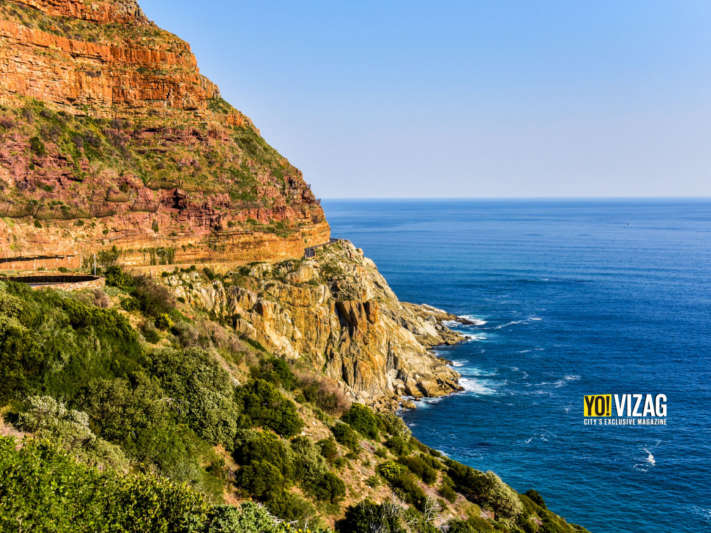Gallivant to the forested realm of loose Elks and icy shores of migrating whales. Discover an island which wears a strong cultural influence, from its indigenous

28 hours after taking off from the Vizag International Airport, Sheen; a resident of Madhurawada dropped anchor in Cape Breton. An island located in the Canadian province of Nova Scotia, it was, according to him, every photographer’s dream location.
The province’s vistas are undoubtedly stunning but the credit for the locale’s appeal goes to the French who arrived here 300 years ago. The Parisian touch lingers in the island’s language, gourmet and architecture. Long and narrow buildings determine the shape of the province’s houses. Large windows let the light into the wooden winter style abodes, in a nod to a colonial era. Some Dormer style houses introduced by Scots to Nova Scotia are home to a diverse population of hospitable folk, who celebrate life in the island’s short-lived summers.
Ebony roads are dotted with conifers like Pine and Maple which remain frozen from November to January in harsh winters. As difficult as the late spring and peak fall conditions are, it offers its unique scenery against a stark white backdrop. A milder climate from February to September makes the Cape warmer than other parts of Canada because of the coast. The coastline surrounded by cliffs also causes unpredictable storms which disrupt tourist activities.
What to do and when
Tourism takes a backseat in fall; although there are a few activities. Locals and foreign tourists revive their Celtic connection in the ‘Celtic Colours International Music Festival’. Ice hockey, the island’s most popular winter sport and cross-country skiing sum up winter tourism. Winter camps are a private affair as locals often retreat to their lake houses and hill-top cabins.

Whale of a time
Cape Breton is a popular destination for whale sightings and owes this to its oceanic border of the Atlantic Ocean. Large Humpbacks, Minkes and Finbacks arrive in the spring and stay until late Fall. If the weather is not too stormy, a cruise takes visitors to witness whale songs and watch these entertainers of the sea in their natural habitat. Sharks, dolphins, seabirds and porpoises make an appearance too.
Winding roads
Warmer months melt the snow to reveal breathtaking scenery on the island’s north-western shore. Around 20 trails slope down circuitous roads. Elks run wild here and trails are closed when mating season ensues. The Cabot Trail is one such route that tempts hikers with plenty of artsy pit-stops, all the way from Englishtown to St Ann’s Bay. Pop into a workshop to meet workers skilled in pottery and glass or engage with a mismatch of painters and sculptors.
A society, not so marooned
The island has a small world charm which plays a big part in preserving the Mi’kmaq community; the dominant tribe in the Canadian Maritimes. Their vibrant culture celebrates everyday life with songs and chants. The tribe’s younger generations have taken to a typical Canadian life. However, the elders still preserve their heritage by reviving ancient rituals. Some smoke tobacco leaves which are considered divine. Others wear war bonnets, which are a feathered headgear. Men and women alike sport long hair, another remnant of the Mi’kmaq heritage. For livelihood, the community cultivates wheat and apple; whilst others lean towards plumbing, car repairs and sales; along with the rest of the Canadian population.
Epicurean delights
Traditional dishes include French pea soup, tourtières (meat pies) and poutine (cheesy fries covered with gravy.) Potatoes are the main diet along with pork sausages, and baloney which resembles thick salami. Meaty burgers are common and winter stews are a must have.
Showtime
Broadway shows are popular with the residents and tourists. Live theatres like The Savoy and the Boardmore Playhouse celebrate the best of Broadway. Troupes perform every week attracting musicophiles and anybody with a taste for the performance arts, who turn out in numbers. The shows are worth the $100 ticket and leave a lasting impression on all its audience.
All Aboard
Under blue skies and sometimes on thin ice, a fast-growing world of cruise ships dock at the Port of Sydney, Nova Scotia. The Port welcomes a record-breaking total of 90 visits via cruise liners from July to October. Like the waves which crash on the rocky shores of Cape Breton, the tourism wave brings several thousand passengers here, who travelfrom the far corners of the world to only bask in the soft colours of the Canadian landscape.
How to get there
Getting here is a long haul. Unless the plan involves a cruise to Canada; the easiest route is by air. A flight from Delhi lands in Amsterdam which has several flights connected to Sydney N.S or Halifax. A short flight from either of these provinces leads to Cape Breton.










Discussion about this post